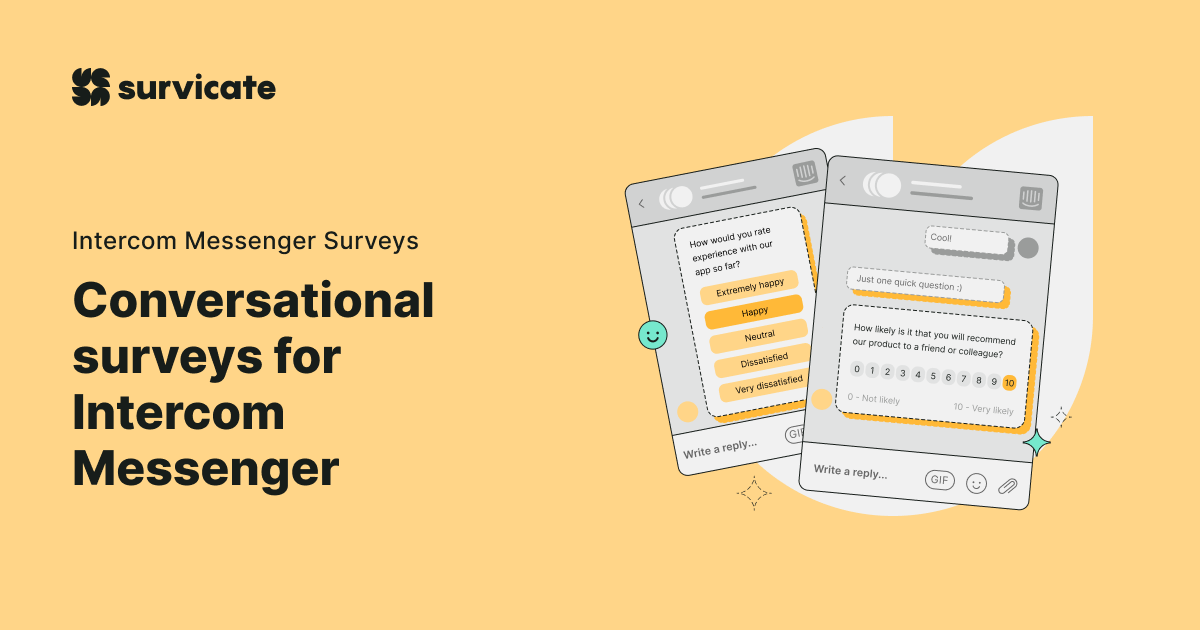Running a survey is pretty straightforward with Survicate. All it takes is 5 steps.
On clicking the button next to the template's preview above, you'll be encouraged to sign up for our Flexible plan. It allows you to use the tool free of charge until collecting the first 100 responses.
(To choose a more robust plan, please see our pricing page.)
Once you've looked around the tool:
1. Edit and customize the user persona survey template
The survey template is practically ready to use. Tweak it according to your needs. Change the color palette and the background if you want to enhance your branding.
PRO TIPs:
- Thanks to our survey personalization feature, you'll be able to build a rapport with the survey respondents. Greet the respondents and call them by their names. It's a helpful hack that helps you engage the survey takers and increase the response rates.
- The survey is on the long side. Consider adding a progress bar so that the respondents can see how they progress by leaving their responses - it keeps them motivated.
2. Configure and set up the campaign
Configure the campaign by setting response limits and deciding on the campaign's duration. It's particularly important if you send it to your user base, as opposed to a target audience at large.
The less diverse your user base is and the fewer personas you're creating, the fewer respondents you need. Setting up response limits will let you send the UX persona survey to the right number of users. This way you’ll be able to send other surveys in the future without worrying about spamming your user base.
In the next step, the tool will ask you to select a 3rd party tool you will use to distribute the surveys.
It's an optional step we recommend taking. If you're going to email the survey, select the marketing automation tool you will use.
This will let you see the identity of the respondents and their contact information. You'll be able to get back to them to arrange the user persona interviews. (You can skip the contact form part in the survey if you're using this feature!)
3. Connect 3rd party tools
This step is obligatory only if it's the first time you're sending a survey campaign with Survicate.
To use the integrations Survicate offers, you need to enable them. Go through the list and choose the ones you want to use:
- The integration with collaboration tools like Slack or Microsoft Teams will let you receive the responses in the collaboration tools - useful if you want the team to stay up to date.
- The integrations with product management tools like Amplitude, Productboard, or Mixpanel will let you work on the survey responses in your product management tools. Have them close at hand whenever you work on you need to refer to your personas when working on the product.
- The integrations with marketing automation tools (ActiveCampaign, Mailchimp, and GetResponse) or CRM platforms (Hubspot, Intercom, and Salesforce) will help you automate the conversations and enrich the user persona survey with the user data from the CRMs.
Connecting Google Sheets to Survicate will be handy if you want to work on the responses in the Google tool.
Survicate walks you through the integration process. No coding skills are required!
4. Send the survey
Now, you're ready to distribute the survey through your chosen communication channel. If you email it, embed the survey in the email body (copy the code generated by the feedback collection tool). It will significantly boost the survey response rates.
PRO TIPs:
- Before you send the survey to many respondents, test it - send it to another team member and ask for feedback, or send it to yourself so that you can click through it and see if you've taken everything into account.
- Start the survey anew if you want to trigger the survey in a mobile app or run it on your website. (Select a different survey type in our tool.)
5. Analyze the results.
Survicate gives you real-time access to survey responses.
Keep track of them in the tool's panel, where you'll find a response breakdown and a word cloud showing the predominant phrases the respondents used.
Or use your product management platform to easily analyze the responses against other user data. Connect the dots by comparing descriptions of the users' context with how they actually use the tool.
By doing so, you'll also be able to identify your best customers and cherry-pick them for user interviews.
Check out the user persona template now, get to know your customers, and build user-centric products people love! 🚀




.svg)



.webp)




.svg)
.svg)
.svg)

.svg)


.svg)






.svg)




.svg)

















.svg)






























.svg)

.svg)
.svg)



.svg)


















.svg)

.svg)

















-min.jpg)


